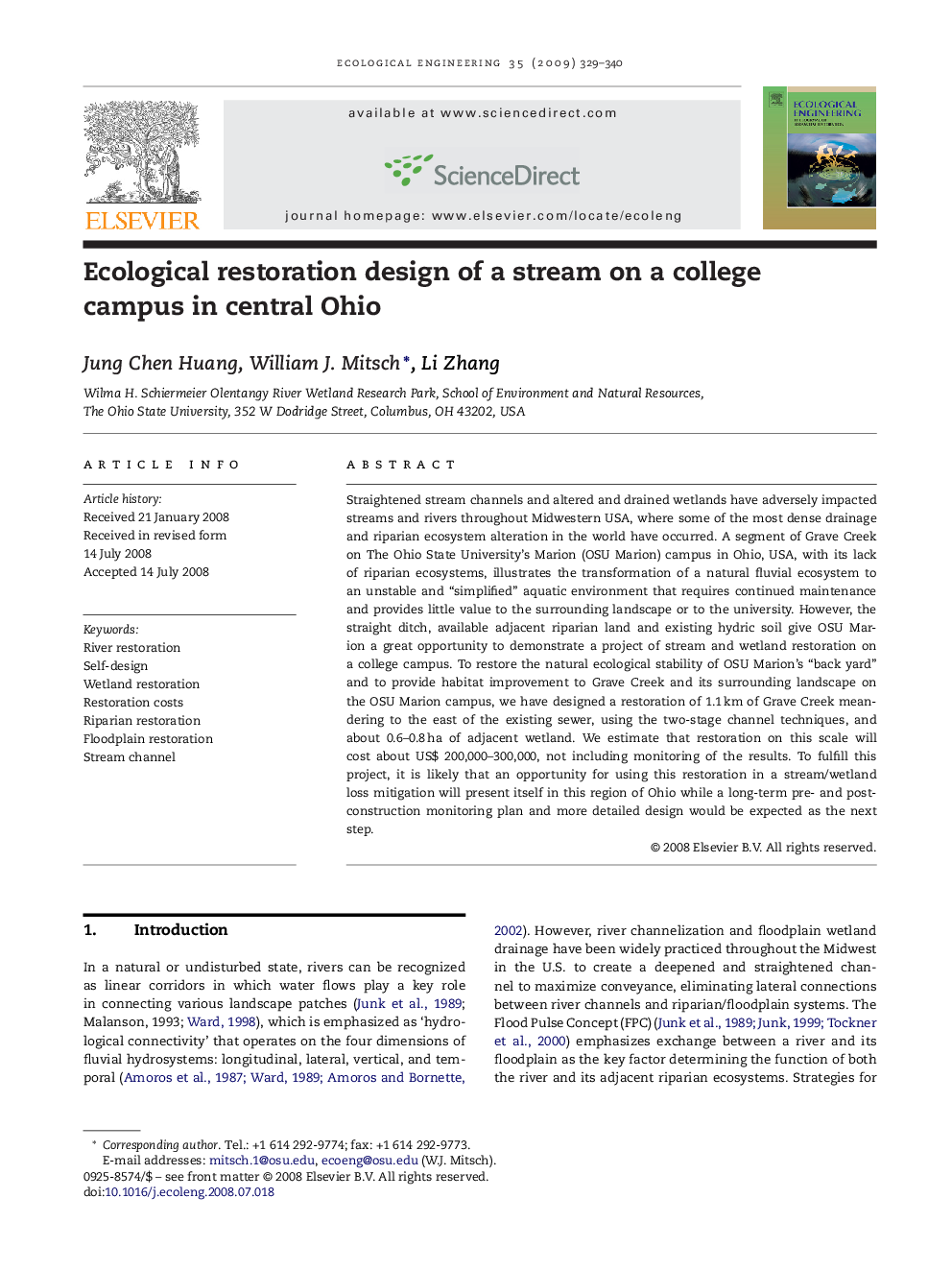| Article ID | Journal | Published Year | Pages | File Type |
|---|---|---|---|---|
| 4391033 | Ecological Engineering | 2009 | 12 Pages |
Straightened stream channels and altered and drained wetlands have adversely impacted streams and rivers throughout Midwestern USA, where some of the most dense drainage and riparian ecosystem alteration in the world have occurred. A segment of Grave Creek on The Ohio State University's Marion (OSU Marion) campus in Ohio, USA, with its lack of riparian ecosystems, illustrates the transformation of a natural fluvial ecosystem to an unstable and “simplified” aquatic environment that requires continued maintenance and provides little value to the surrounding landscape or to the university. However, the straight ditch, available adjacent riparian land and existing hydric soil give OSU Marion a great opportunity to demonstrate a project of stream and wetland restoration on a college campus. To restore the natural ecological stability of OSU Marion's “back yard” and to provide habitat improvement to Grave Creek and its surrounding landscape on the OSU Marion campus, we have designed a restoration of 1.1 km of Grave Creek meandering to the east of the existing sewer, using the two-stage channel techniques, and about 0.6–0.8 ha of adjacent wetland. We estimate that restoration on this scale will cost about US$ 200,000–300,000, not including monitoring of the results. To fulfill this project, it is likely that an opportunity for using this restoration in a stream/wetland loss mitigation will present itself in this region of Ohio while a long-term pre- and post-construction monitoring plan and more detailed design would be expected as the next step.
